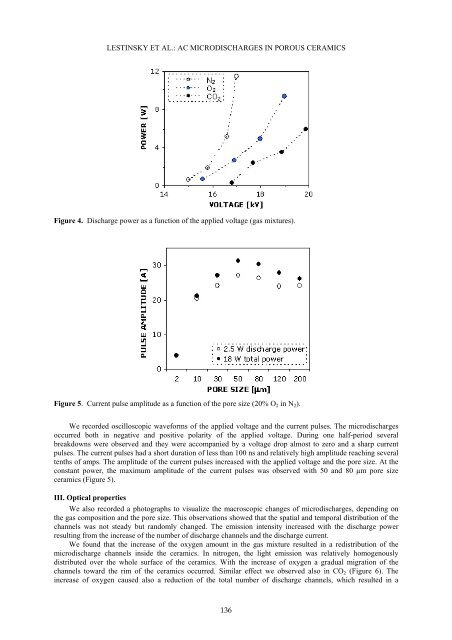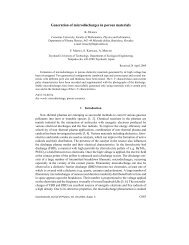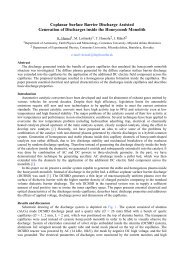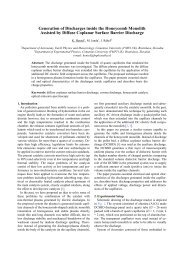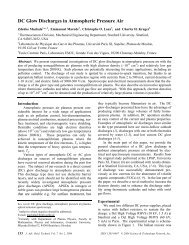Example of WDS style article: MS WORD template
Example of WDS style article: MS WORD template
Example of WDS style article: MS WORD template
- No tags were found...
Create successful ePaper yourself
Turn your PDF publications into a flip-book with our unique Google optimized e-Paper software.
LESTINSKY ET AL.: AC MICRODISCHARGES IN POROUS CERAMICSFigure 4. Discharge power as a function <strong>of</strong> the applied voltage (gas mixtures).Figure 5. Current pulse amplitude as a function <strong>of</strong> the pore size (20% O 2 in N 2 ).We recorded oscilloscopic waveforms <strong>of</strong> the applied voltage and the current pulses. The microdischargesoccurred both in negative and positive polarity <strong>of</strong> the applied voltage. During one half-period severalbreakdowns were observed and they were accompanied by a voltage drop almost to zero and a sharp currentpulses. The current pulses had a short duration <strong>of</strong> less than 100 ns and relatively high amplitude reaching severaltenths <strong>of</strong> amps. The amplitude <strong>of</strong> the current pulses increased with the applied voltage and the pore size. At theconstant power, the maximum amplitude <strong>of</strong> the current pulses was observed with 50 and 80 µm pore sizeceramics (Figure 5).III. Optical propertiesWe also recorded a photographs to visualize the macroscopic changes <strong>of</strong> microdischarges, depending onthe gas composition and the pore size. This observations showed that the spatial and temporal distribution <strong>of</strong> thechannels was not steady but randomly changed. The emission intensity increased with the discharge powerresulting from the increase <strong>of</strong> the number <strong>of</strong> discharge channels and the discharge current.We found that the increase <strong>of</strong> the oxygen amount in the gas mixture resulted in a redistribution <strong>of</strong> themicrodischarge channels inside the ceramics. In nitrogen, the light emission was relatively homogenouslydistributed over the whole surface <strong>of</strong> the ceramics. With the increase <strong>of</strong> oxygen a gradual migration <strong>of</strong> thechannels toward the rim <strong>of</strong> the ceramics occurred. Similar effect we observed also in CO 2 (Figure 6). Theincrease <strong>of</strong> oxygen caused also a reduction <strong>of</strong> the total number <strong>of</strong> discharge channels, which resulted in a136


